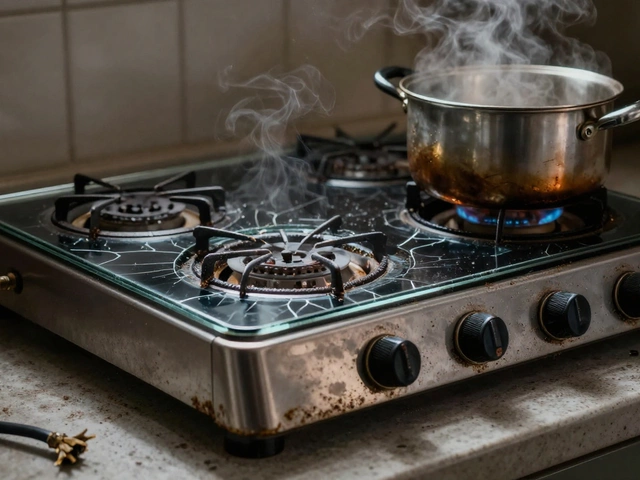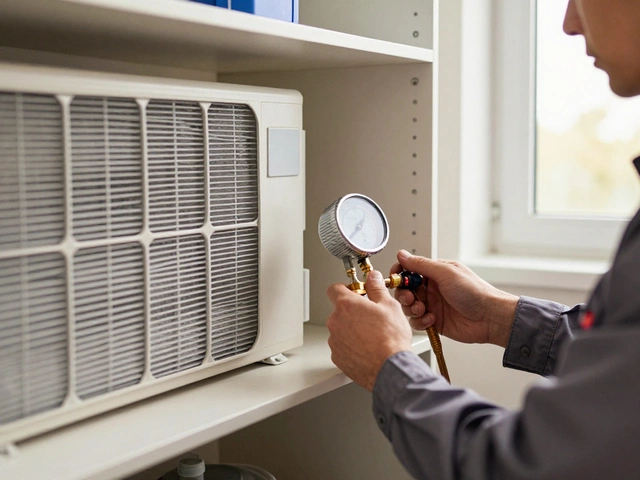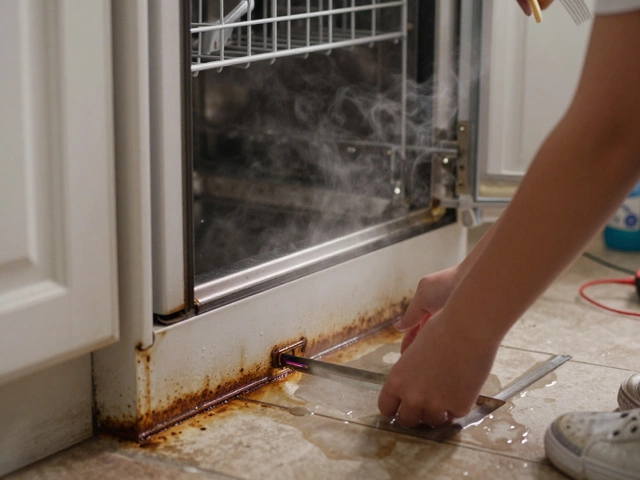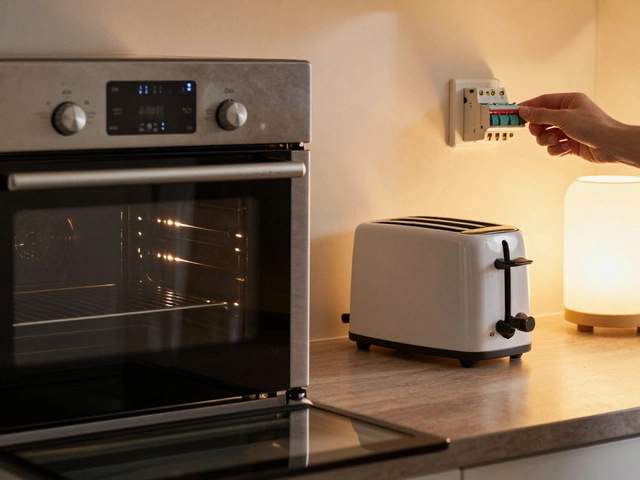Refrigerators rarely quit over something minor—it’s usually a big-ticket part that fails. Fixing that can cost almost as much as buying a brand-new fridge. So, what’s the priciest thing to repair? It’s the compressor. This is basically the heart of your refrigerator, pumping refrigerant and keeping everything cold. If it goes out, your fridge might as well be an expensive cabinet.
Compressor replacements involve high labor costs plus the price of the part itself, which can hit several hundred dollars or more. On some models, it’s not just about swapping out the old part; techs often have to deal with sealed systems, specialized tools, or even rare refrigerants. That’s what drives prices through the roof.
- Why Compressors Cost a Fortune
- Spotting the Signs Before It’s Too Late
- Is Repairing Worth It, or Should You Replace?
- Tips to Prevent Pricey Refrigerator Repairs
Why Compressors Cost a Fortune
The compressor is the most expensive thing to fix on a refrigerator for a few key reasons. First, it’s the main engine that keeps your food cold. When it fails, the whole fridge is useless. Compressors are complex, sealed devices, and they aren’t designed for quick fixes. You can’t just pop them open and change a few tiny parts like you could with other fridge components.
Here’s what drives those sky-high repair bills:
- Specialized labor: Replacing a compressor isn’t a simple DIY job. Certified techs need to handle refrigerants (which are tightly regulated due to environmental rules), and every step takes skill and pricey tools.
- Parts cost: Compressors aren’t cheap. For a standard home fridge, a compressor alone can run $200 to $500. Some higher-end or smart fridges? Even more.
- Extra fees: It’s not just the compressor. You often pay for filters, lines, connectors, and sometimes even a refrigerant recharge. These hidden costs sneak up fast.
- Time: Technicians usually spend a few hours removing the old compressor, cleaning out the system, and installing the new one. Most shops bill by the hour, so the clock is always ticking.
If you check repair shop price lists, compressor jobs almost always top the charts, right alongside sealed system repairs (they’re usually related). For a visual peek at how this stacks up, look at this sample price comparison:
| Part or Repair | Typical Cost Range (USD) |
|---|---|
| Compressor Replacement | $350 - $850 |
| Control Board | $200 - $400 |
| Thermostat | $100 - $250 |
| Ice Maker | $150 - $250 |
No wonder people pause before approving a fridge repair that involves the compressor. It’ll hit your wallet harder than almost anything else in your kitchen.
Spotting the Signs Before It’s Too Late
Repairing a fridge compressor is never cheap, so the real trick is catching the warning signs early. How do you know if trouble is brewing? Here are clear signs your fridge’s compressor could be failing:
- The fridge isn’t staying cold, even when set to the lowest temperature. Food spoils faster and drinks stay lukewarm.
- You hear constant clicking or buzzing from the back of the refrigerator, almost like the appliance is struggling to start over and over.
- Sometimes, the fridge runs nonstop. The compressor never seems to turn off, burning more power and making the motor super hot to the touch.
- On the flip side, if your fridge seems unusually quiet and nothing’s running, it could mean the compressor quit altogether.
- You spot puddles or condensation inside or under the fridge because things aren’t cooling right.
Missing these signs means you’re gambling with your wallet. According to a 2024 survey by HomeServe, most homeowners ignored compressor noises for weeks, thinking it was just the fridge getting old, but by then the damage was much worse—typically leading to a full system breakdown.
"Ignoring odd fridge sounds can turn a minor repair into a major replacement. If your refrigerator isn’t cooling properly, call a pro before the compressor fails completely." — Paul Ramirez, Certified Appliance Technician
Don’t just shrug off odd sounds or warm spots. Take a minute every month to check the back of your fridge for heat and listen for strange noises. If you notice any issues on the list, acting fast can keep your fridge repair bill from getting out of hand.

Is Repairing Worth It, or Should You Replace?
This is the question pretty much everyone faces once the repair bill lands: Fix the fridge or buy a new one? Here’s the deal—it’s not always a clear yes or no. Let’s break down what really matters when you’ve got a busted compressor (or any other pricey refrigerator fix).
First off, check the age of your fridge. The average refrigerator in the U.S. lasts about 10 to 13 years. If yours is past that, sinking a few hundred bucks (or more) into fridge repair often isn’t worth it. Newer models are way more energy-efficient, so replacing a ten-year-old energy hog might even save you money on your electric bill.
Now, let’s talk numbers. Compressor repair or replacement can set you back anywhere from $400 to $1,200, depending on your fridge’s brand and type. For high-end or built-in models, it can be even higher. Here’s a quick side-by-side look at repair vs. replace costs and benefits:
| Compressor Repair | Buying New | |
|---|---|---|
| Average Cost | $400 - $1,200 | $700 - $2,500+ |
| Warranty | Usually 90 days - 1 year (repair) | 1 year+ plus manufacturer options |
| Energy Efficiency | No change | Improved (new models) |
| Expected Lifespan | Maybe a few years (if fridge is old) | 10-13 years (new fridge) |
Questions to ask yourself:
- Is the fridge less than 8 years old?
- Is it a high-end, built-in, or specialty model?
- Is the rest of your fridge in good shape—no ice build-up, funny noises, or electrical issues?
If you answer yes to those, a repair *might* make sense. But if your fridge is getting up there in age, is a basic (top-freezer, not fancy) model, or has other problems, replacement is usually smarter.
One last thing: check if parts or labor are still covered by a warranty. Some compressors come with a five or ten-year warranty, so you might luck out and pay way less. Always check your paperwork or call the manufacturer first before shelling out for major repairs.
Tips to Prevent Pricey Refrigerator Repairs
If you want to avoid those eye-watering repair bills, there are some solid moves you can make to keep your fridge happy. Most folks don't realize a little attention once in a while can save you a ton later.
- Fridge repair pros always say: Keep the coils clean. Those condenser coils (usually on the back or underneath) gather dust, pet hair, and kitchen grime. When they're packed tight, your compressor works way harder than it should, which can lead to early failure. Try vacuuming or brushing them off every six months.
- Don't pack your fridge to the brim. When air can't move, the compressor keeps running to get everything cooled down, which means extra wear and tear over time. Leave some space between items for chill air to flow.
- Check the door seals with a quick dollar bill test. Close the fridge door on a bill and try to pull it out. If it slides right out, you’ve got a leaky seal and cold air is escaping, again making your fridge work harder than it should.
- Set the right temperature. The sweet spot is usually 37–40°F for the fridge and 0°F for the freezer. Too cold and you waste energy; too warm and things spoil. Plus, wrong temps can mess with how your compressor cycles on and off.
- Don’t ignore weird noises or clicking sounds. If your fridge starts making odd noises, don’t just turn up the TV and hope for the best. Strange sounds often mean something’s about to go south, and fixing things early is always cheaper than waiting until you're left with melting ice cream and a busted fridge.
With just a little routine care and some quick checks, you’ll give your fridge a longer life and avoid those monster repair bills. Think of it like changing the oil in your car—keep on top of the little stuff, and the big stuff rarely sneaks up on you.





